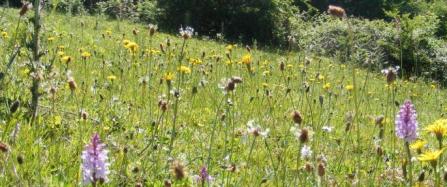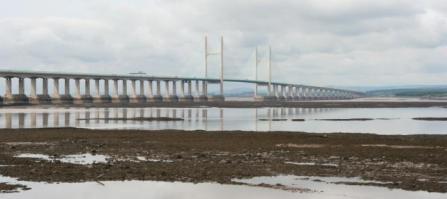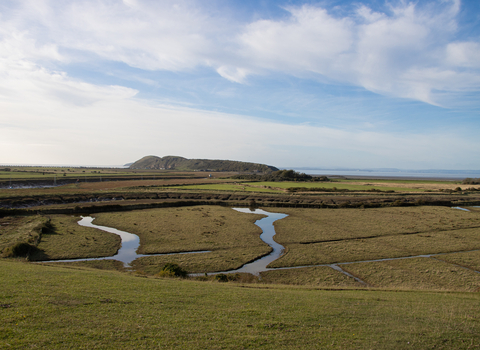Avon Wildlife Trust manages 30 nature reserves across the region, as well as looking after other land in partnership with farmers and landowners.
From the rolling hills and valleys of the Mendips and Cotswolds, to the sweep of the Severn Estuary and its low-lying wetlands, our region’s landscapes are inspiring, varied and beautiful. And we’re working hard to help wildlife thrive in ancient woodlands, open wildflower grassland and coastal wetlands across Avon.
We manage these large areas to create Living Landscapes which wildlife like bats, owls and hedgehogs can move through and shelter in. Helped by hardworking volunteers, our conservation team works throughout the year in all weathers to manage and improve all these landscapes for wildlife, and for people to enjoy in every season.
Avon's special habitats
Find out more about the hands-on work we’re doing across Avon’s stunning mixture of landscapes to monitor and look after wildflower-rich limestone grasslands, the North Somerset Levels and Moors, and the Severn Estuary.
Avon's Wildflower Grasslands

97% of the UK's wildflower-rich grasslands have been lost since the 1930's, with a devastating impact for many species. We’re working to protect this rare and valuable habitat. In the winter we clear away scrub plants like gorse and blackthorn from grassland areas to prevent it encroaching onto delicate wildflowers, and we cut back tall grasses after the flowers have dropped their seeds at the end of each summer, to ensure year after year the wildflowers can flourish.
Limestone grasslands are found on the thinner calcareous soils found in the Mendip Hills, the Cotswolds Scarp and in Avon Gorge in the heart of Bristol. Dolebury Warren and Walton Common are two of our limestone grassland reserves and our Folly Farm nature reserve in the Chew Valley also has abundant wildflower grassland.
We work with many other landowners to protect, manage and expand these valuable wildlife habitats, through the West of England B-Lines Project. Our work is supported by The Banister Charitable Trust among others.
North Somerset Levels and Moors

The North Somerset Levels and Moors is an extensive area of low-lying wetland adjacent to the Severn Estuary between the Mendip Hills in the south and Bristol to the north, and this area represents 3.5% of this nationally rare habitat.
Criss-crossed by drainage channels, this wet grassland is also known as grazing marsh and important for many species of wetland birds including snipe and lapwings, as well as the rare greater horseshoe bat which can be found hunting for insects over this landscape.
Our Puxton Moor and Weston Moor nature reserves in the Gordano Valley are within a National Nature Reserve and these distinctive areas of inland marsh need careful conservation work to provide the right conditions for wetland birds as well as otters and water voles. We work with farming partners to graze these areas, ensuring the grasses are at the right height to attract and support ground nesting birds like common snipe and lapwing. We also ensure the tall reeds growing freely in the wetland soil do not encroach onto the feeding grounds for these wetland birds, and maintain hedgerows to provide shelter, food and a wildlife 'corridor' for many species.
Thank you to Wessex Water for funding our work on the North Somerset Levels and Moors.
The Severn Estuary

All the coastal areas of Avon lie within the Severn Estuary - an internationally important conservation area and one of the great natural wonders of the world
Its funnel shape and second-largest tidal range in the world create a unique, highly dynamic environment resulting in unique wildlife habitats shaped by the beautiful winding rivers that run down from the Welsh hills to meet the sea of the Bristol Channel.
This unique landscape supports internationally important wildfowl and wader populations, including shelduck, winering dunlin, white-fronted goose, gadwall, and redshank, and Bewick’s swan, and provides a key staging ground during migration for species such as ringed plover and whimbrel.
Monitoring and surveying the landscape

We do regular survey and monitoring work on our nature reserves and other land across Avon, helped by volunteers and in partnership with other conservation organisations. This lets us find out about the condition of habitats, and the health and populations of birds, mammals, invertebrates and plants. The data we collect helps us create the right conditions for wildlife to move and flourish across the landscape. If you're interested in helping us with monitoring please get in touch.





